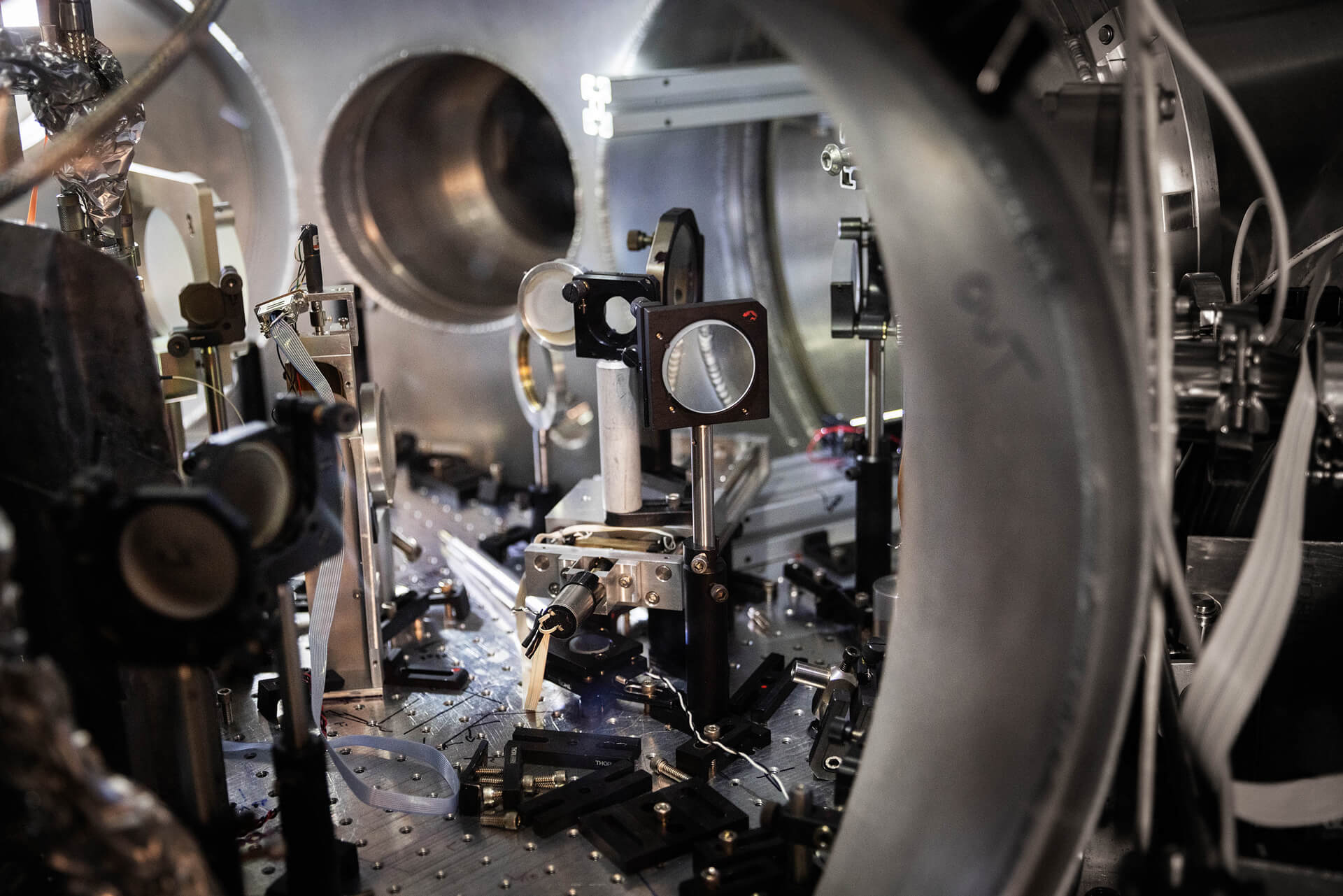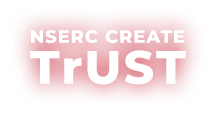Research

Photo Credit: Josée Lecompte
Ultrafast Science and Technology
Ultrafast lasers and technologies allow scientists to get a glimpse of microscopic phenomena occurring at the atomic and molecular levels.
Photo Credit: Josée Lecompte
Possible Applications
The uses of these technologies are varied. In academic research they have applications in the fields of spectroscopy, nonlinear and quantum optics, biomedical imaging and many more.
They also have applications in the 5 key innovation sectors of Canada:
Environment and agriculture
Natural resources and energy
Information and communications technologies
Advanced manufacturing
Health and life sciences
For example, ultrafast lasers are used for advanced manufacturing with high precision microprocessing of materials, giving rise to new information and communication technologies.
Research Projects
Available
INRS EMT, Varennes, QC
Graduate Student Positions (PhD) in the Extreme Photonics at Tsuneyuki Ozaki’s lab
Research fields : High-order harmonic generation, Advanced Terahertz spectroscopy, Biophotonics.
3 projects are available for PhD positions :
- Project #1: Femtosecond high Average-power Micro-joule & Milli-joule Extreme-Ultraviolet Source
(FAMEUS) - Project #2: Nonlinear Terahertz Photonics
- Project #3: High-sensitivity, high-throughput Terahertz Sensor for Biology & Medicine
For more details, click on the title.
Tsuneyuki Ozaki
Professor
INRS EMT and O/E Land Inc., Varennes and LaSalle, QC
Development of a passive mode-locked fiber laser at 1300 nm spectral region
This project involved the design, construction, and characterization of a self-starting, passively mode-locked fiber laser operating in the O-band, centered at a wavelength of 1310 nm. Leveraging advanced fiber optics and mode-locking techniques, the laser was engineered to produce pulses with durations in the nanosecond range. The use of passive mode-locking—achieved through a nonlinear amplifying loop mirror in a figure-9 configuration—ensured simplicity, stability, and cost-effectiveness, making it a strong candidate for applications including telecommunications, medical imaging, and spectroscopy.
The system demonstrated stable pulse generation across a 120 nm tunable wavelength range, with a fundamental repetition rate of 12.7 MHz. Pulse durations ranged from 10.4 ns to 58.8 ns, and the spectral bandwidth varied between 0.21 nm and 0.41 nm. Stability and self-starting operation were supported by a polarization controller and a fiber-based phase shifter.
Key milestones included the design and assembly of the fiber laser cavity, optimization of mode-locking conditions, and thorough characterization of pulse parameters. The performance of the laser was benchmarked against conventional sources, with improvements in tunability, stability, and spectral characteristics.
This compact and robust laser system offers strong potential for integration into advanced photonic systems, supporting further developments in nonlinear optical microscopy, optical coherence tomography, and high-speed data transmission. Overall, this project contributes meaningfully to the field of fiber-based pulsed lasers, advancing the understanding and implementation of passive mode-locking techniques in the 1310 nm spectral region.
Narges Amouzandeh
M. Sc. Student, with Professor François Légaré from INRS EMT and O/E Land Inc.
UNBC, Prince George, BC
Construction of a Low-Cost Interference-Based Extended Terahertz Scanner for Characterizing Moisture Content and Density
The NSERC CREATE TrUST program is a recently introduced training ecosystem with the goal of creating the next generation of innovators, scientists and entrepreneurs in ultrafast science and technology. It does this by bringing together Canada’s national labs, researchers and companies to provide opportunities to students to develop skills, learn networking and contribute to the innovation sectors of Canada. Two of these sectors include natural resources and manufacturing.
This is where my project for my M. Sc. in Physics thesis fits. By creating a novel apparatus, we are attempting to use phase contrast Terahertz imaging to finely measure mass variation and moisture content in paper products. This is done by constructing a Mach-Zehnder type interferometer to recover the phase change of a diode-produced laser beam passing through a sample. By using a series of silicon beam splitters, we split our reference and sample arms into multiple equivalent beams along a simulated manufacturing line. We then recombine them at an angle in the plane of the beam onto a detector. This produces an interference pattern that is dependent on the mass per unit area in the sampling arm of the interferometer. As the mass is found using the phase, the intensity can be calibrated to indicate moisture content variations in the sample. This non-destructive imaging technique will also be applicable to other forms of manufacturing and quality control such as plastics and particle board.
Lucas Bergen
M. Sc. Student, with Professor Matt Reid and Professor Ian Hartley from UNBC
Internship Projects
Internship proposal form for companies
If you are a working in a company that is looking for highly qualified interns and are interested in hiring TrUST students, please click on this post and fill in the form with an internship project proposal and contact the program coordinator (genevieve.boudreau@inrs.ca).
GeologicAI, Calgary, AB
My internship with GeologicAI : a unique experience that I am extremely grateful for
Hi, my name is Liam. I’m an M. Sc. candidate at the University of Alberta and a member of the NSERC CREATE TrUST program. I undertook a 4 month internship at GeologicAI at their Calgary, Alberta office where I developed a Laser-Induced Breakdown Spectroscopy (LIBS) unit for detecting elemental signatures within drill core and grading ore samples. It was a great extension of my work as an M. Sc. student at the U of A, and despite the short term of work, I was able to design, build, and test — from the ground up — a laser system for them. I was able to work with a team of extremely field-diverse individuals across their respective areas of expertise, and was able to learn about, and help further, work in X-Ray Fluorescence (XRF) spectroscopy as well as Hyperspectral Imaging (HSI).
It was a unique experience and I’m extremely grateful to both GeologicAI and the NSERC CREATE TrUST program for the opportunity. I was able to expand my knowledge of LIBS and the underlying physical processes by applying my existing knowledge to new problems in a different application than I had worked on before. This gave me good experience and insight into the differences between academic and industrial research, allowing me to make better informed decisions for my future career path. The internships I’ve taken throughout my undergrad and M. Sc. have been some of the best decisions I have made, and I would strongly encourage existing and incoming undergraduate and graduate students to pursue opportunities such as these.
Liam Droog
M. Sc. student, with Professor Amina Hussein and GeologicAI
Lumentum, Ottawa, ON
My internship with Lumentum : a valuable complement to my academic training
My name is Amin, and I am a PhD candidate in Physics at the University of Ottawa, as well as a member of the CREATE TrUST program. I recently began an internship at Lumentum, a leading photonics company based in Ottawa. The internship was initially offered for 8 months, with the possibility of extension based on performance, and I’m happy to say the company has been very satisfied with my contributions.
At Lumentum, I’ve been working on the design of optical verification tests and the characterization of optical performance for WSS (Wavelength Selective Switch) modules — one of the key technologies developed by the company. This was a new area for me, but thanks to a well-structured onboarding process, I was able to quickly get up to speed and begin making meaningful contributions to the team.
This internship has been a valuable complement to my academic training. It has deepened my understanding of many theoretical concepts by applying them to real-world projects and has given me insight into how industrial research and development differ from academic work. Experiencing both environments has been incredibly helpful in thinking about my future career path and where I see the best fit for my skills and interests.
I strongly encourage other students in the ultrafast science field to take advantage of internship opportunities like this. It’s a chance to gain hands-on experience, expand your professional network, and explore new directions for your future. I’m truly grateful to the CREATE TrUST program for providing this opportunity and supporting students in building meaningful connections between academia and industry.
Mohammad Amin Hemmatian
Ph. D. Student, with Professor Ksenia Dolgaleva from University of Ottawa and Lumentum.


